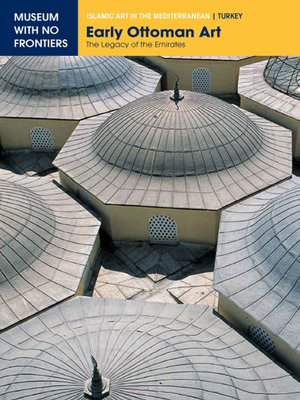Early Ottoman Art
ebook ∣ The Legacy of the Emirates · Islamic Art in the Mediterranean
By Gönül Öney

Sign up to save your library
With an OverDrive account, you can save your favorite libraries for at-a-glance information about availability. Find out more about OverDrive accounts.
Find this title in Libby, the library reading app by OverDrive.



Search for a digital library with this title
Title found at these libraries:
| Library Name | Distance |
|---|---|
| Loading... |
The apogee of Soliman’s reign has for a long time obscured the various seminal disruptions brought into Anatolia by the precursors of the empire. Amongst these were the first Turkish emirates who took advantage of an ebbing Byzantine empire in order to establish themselves in the peninsula. The Ottoman dynasty would of course have the most celebrated destiny, but the architectural, artistic, intellectual, social and economic supremacy which, together with territorial expansion, would take the empire to its zenith, has also resulted in the radical initiatives undertaken by the emirates to reach the highest levels of sophistication in art and architecture. Having inherited a Seljuq Anatolia, itself heiress of Persian, Syrian and Iraqi influences and trustee of the major Christian builders in the Near-East, the emirates deliberately imprinted their seal in every region which had not yet been in contact with Turkish-Islamic culture, through continuous attempts at artistic, cultural and social innovations. This methodical enterprise that was undertaken over the 14th and 15th centuries resulted in a true cohesion which contributed to the empire apogee of the 16th century. This MWNF Exhibition Trail, therefore, aims to highlight the immeasurable technical prowess which, applied in practice on Anatolian soil, would lead to the culmination of the varied typology of mosque designs: the ‘monumental unified mosque’, for example with its central cupola; the architectural style known to have become the glory of the Ottoman empire. The effervescent inventiveness seen in the cultural and political centres Milas, Selçuk, Birgi, Manisa, Bursa, Iznik, Çanakkale and Edirne, is revealed in the madrasas, and monumental tombs and the secular buildings, hammams or caravanserais, where a melting pot teeming with cross-influences yields, finally, a coherent and totally authentic creative style and a basis for the later art of the Ottoman empire.







